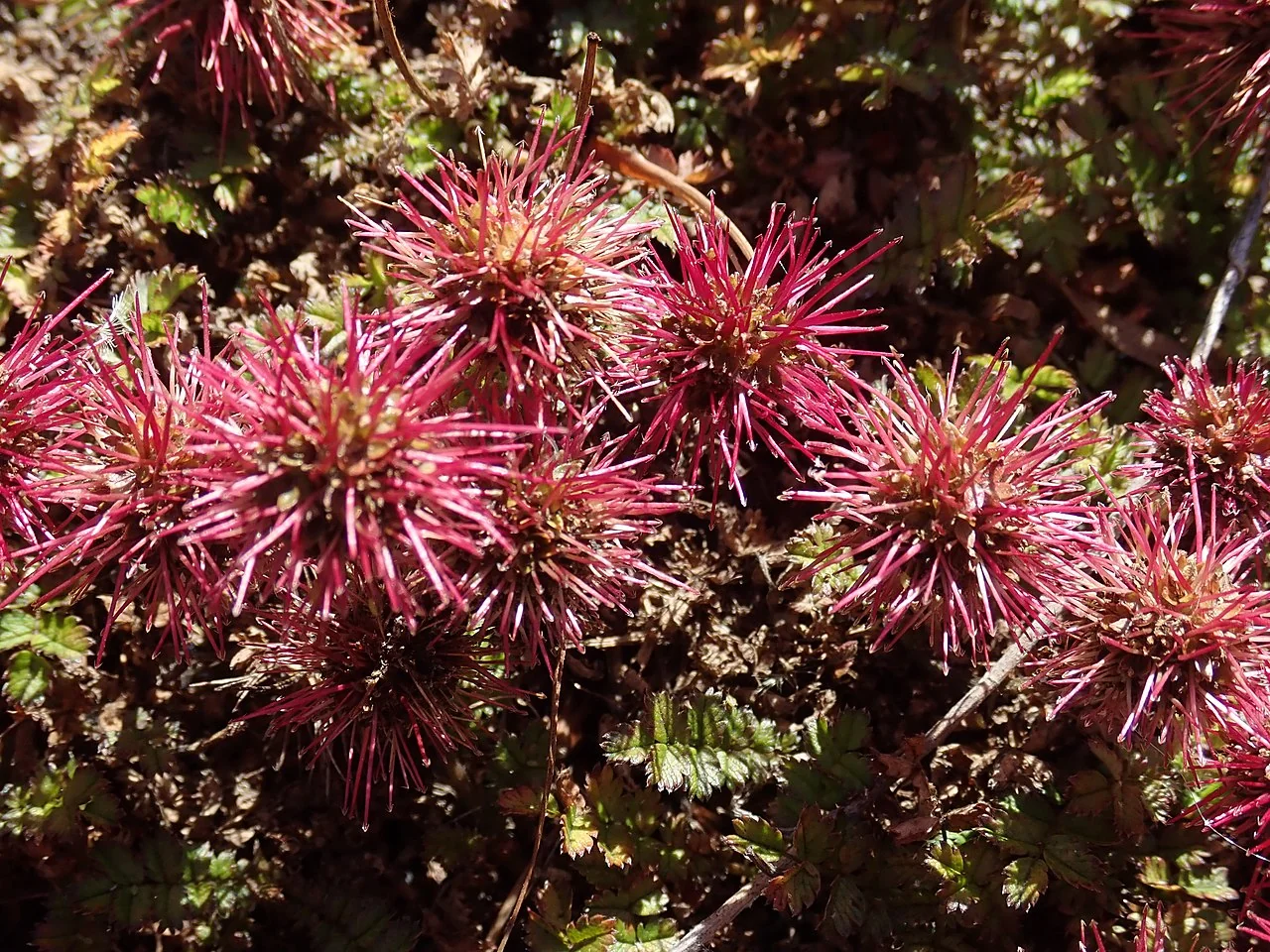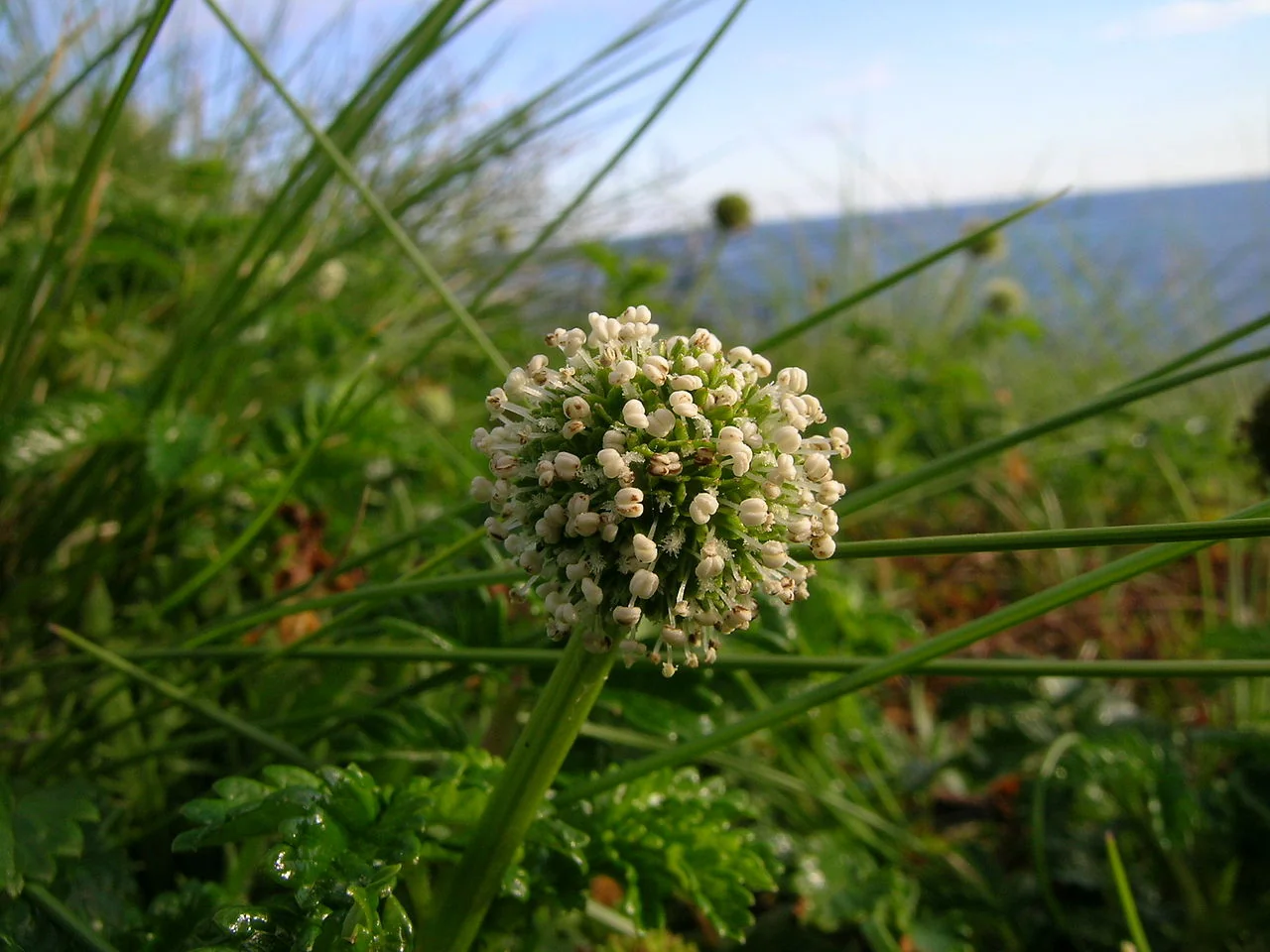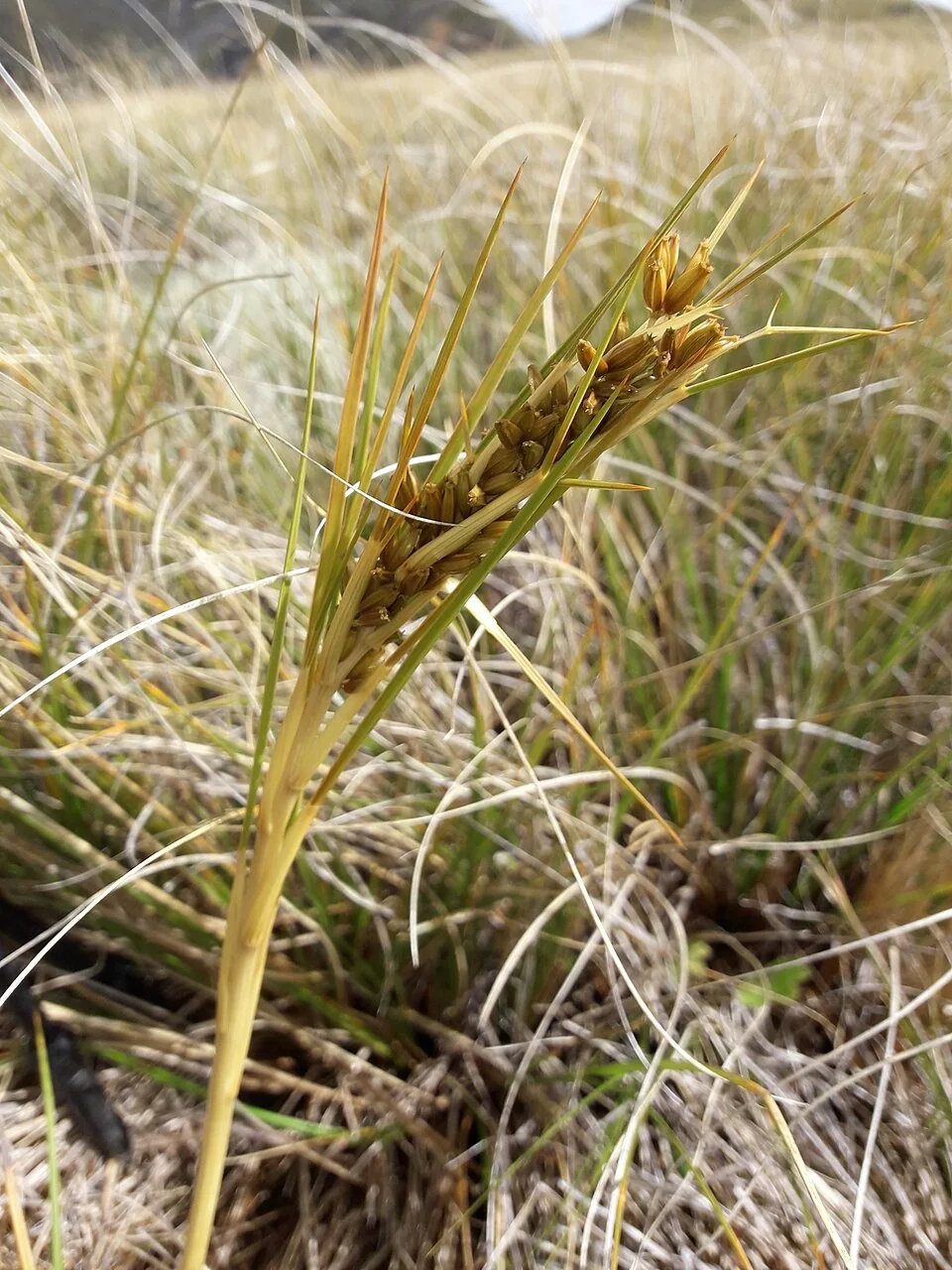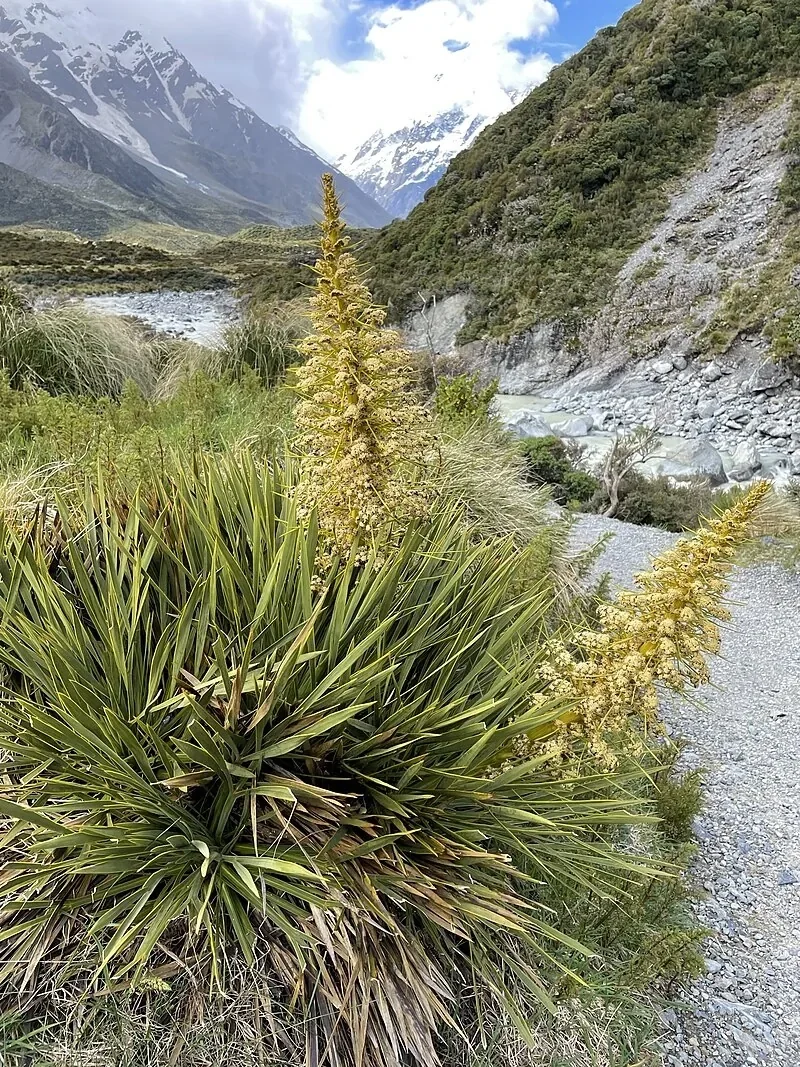
Kaikōmako
Pennantia corymbosa
Kaikōmako (scientific name: Pennantia corymbosa ) is a distinctive native tree with a divaricating growth habit when young, forming a dense, tangled shrub. As it matures, it develops into a small tree with a more open canopy. Its small, fragrant white flowers are followed by bright red berries, providing a valuable food source for native birds. Explore more in the native plants index .

Plant Description
Botanical Features
Pennantia corymbosa , commonly known as Kaikōmako, is a small, deciduous tree endemic to New Zealand. It is notable for its distinctive divaricating (interlaced, wide-angled branching) growth habit when young, forming a dense, tangled shrub that provides protection from browsing animals. As it matures, it develops into a small tree, typically reaching 5-10 meters in height, with a more open, rounded canopy. Its leaves are small, oval to oblong, and dark green, often with toothed margins. In late spring to early summer, Kaikōmako produces an abundance of small, fragrant, creamy-white flowers in dense clusters, which are highly attractive to insects. These are followed by bright red, fleshy drupes (berries) that ripen in autumn and are a favoured food source for native birds. Kaikōmako is a hardy species, tolerant of a range of conditions, including frost and moderate drought, and is found in lowland to montane forests throughout New Zealand.
Quick Facts
Overview
| Scientific Name | Pennantia Corymbosa |
|---|---|
| Height | 5-10 m |
| Spread | 3-5 m |
| Water Needs | Moderate |
| Light | Full sun to partial shade |
| Frost Tolerance | Good |
| Salt Tolerance | Moderate |
| Growth Rate | Moderate |
| Lifespan | Long-lived |
Climate Best Suited to
Regional climate suitability across major New Zealand cities.
Regional Suitability
| Whangārei | Ideal |
| Auckland | Ideal |
| Hamilton | Suitable |
| Rotorua | Suitable |
| Tauranga | Ideal |
| Gisborne | Ideal |
| New Plymouth | Ideal |
| Whanganui | Ideal |
| Palmerston North | Suitable |
| Napier | Ideal |
| Wellington | Ideal |
| Nelson | Ideal |
| Christchurch | Suitable |
| Dunedin | Suitable |
| Invercargill | Suitable |
| City | Climate Suitability |
|---|
Natural Habitat
Pennantia corymbosa , commonly known as Kaikōmako, is a small, deciduous tree endemic to New Zealand. It is typically found in lowland to montane forests, forest margins, and regenerating areas throughout the North and South Islands. Its divaricating juvenile form is thought to be an adaptation to protect against browsing by extinct moa.
Preferred Conditions:
- Well-Drained Soils: Thrives in a variety of well-drained soils, from fertile loams to heavier clays.
- Light Conditions: Tolerates full sun to partial shade. Juvenile plants often prefer some shade, while mature trees can handle more exposure.
- Moisture: Prefers consistent moisture but is moderately drought-tolerant once established.
Distribution:
- Widespread: Found throughout the North and South Islands of New Zealand.
- Forests and Margins: Common in lowland and montane forests, often at the edges or in areas of regeneration.
Kaikōmako's adaptability to different light and soil conditions, coupled with its unique growth habit, makes it a resilient and ecologically significant component of New Zealand's native ecosystems.
Plant Conservation
Pennantia corymbosa , also known as Kaikōmako, is currently classified as "Not Threatened" in New Zealand. This status has been consistent since at least 2004, through assessments in 2009, 2012, and 2017. While it is endemic to New Zealand, found throughout the North, South, and Stewart Islands, it is uncommon north of Auckland and on Stewart Island. Some sources note that its conservation status has "Not evaluated" outside of New Zealand.
Growing Requirements
Soil Requirements
Kaikōmako is adaptable to a wide range of soil types but thrives in fertile, well-drained soils. It can tolerate heavier clay soils as long as drainage is adequate.
- Prefers fertile, well-drained soils
- Tolerates heavier clay soils with good drainage
- pH adaptable (slightly acidic to neutral)
- Benefits from organic matter enrichment
Light Requirements
Kaikōmako performs well in full sun to partial shade. Young plants may benefit from some protection from intense afternoon sun, especially in hotter climates.
- Full sun to partial shade
- Juveniles prefer some shade
- Adaptable to varying light levels
Water Requirements
Water regularly during establishment. Once mature, Kaikōmako is moderately drought-tolerant but will benefit from consistent moisture during dry periods.
- Regular watering during establishment (first 1-2 years)
- Moderately drought-tolerant once established
- Prefers consistent moisture, especially in summer
- Avoid waterlogging
Planting Guide
Pennantia corymbosa , or Kaikōmako, is a resilient and attractive native New Zealand tree, suitable for various planting scenarios, including specimen planting, hedging, and restoration projects. Its unique juvenile form and bird-attracting berries make it a valuable addition to any native garden.
1. Site Selection and Soil:
- Sunlight: Kaikōmako thrives in full sun to partial shade. Choose a location that receives at least 4-6 hours of direct sunlight daily.
- Soil Type: Adaptable to most well-drained soil types, including fertile loams and heavier clays. Good drainage is essential. Amend heavy soils with compost to improve structure.
- Hardiness: Hardy to frost and tolerant of moderate wind exposure.
- Suggested Uses: Excellent as a specimen tree, for mixed native plantings, hedging, and in revegetation projects.
2. Planting Process:
- Timing: Best planted in autumn or spring when the soil is moist and temperatures are mild.
- Preparation: Prepare the planting site by clearing weeds and enriching the soil with well-rotted compost.
- Hole Size: Dig a hole twice the width of the root ball and to the same depth.
- Root Care: Gently loosen any circling roots before placing the plant in the hole.
- Placement: Ensure the top of the root ball is level with the surrounding ground.
- Backfilling and Watering: Backfill with soil, gently firming to remove air pockets. Water thoroughly immediately after planting.
- Spacing: For specimen trees, allow 3-5 meters between plants. For hedging, space closer, about 1-2 meters apart.
3. Watering:
- Consistency: Water regularly during the first two years to ensure establishment.
- Avoid Overwatering: Allow the topsoil to dry slightly between waterings to prevent root rot.
- Established Plants: Moderately drought-tolerant, but provide supplementary water during prolonged dry spells.
4. Fertilizing:
- Young Plants: A light application of a balanced, slow-release native plant fertilizer in spring can encourage growth.
- Established Plants: Generally, established plants do not require heavy fertilization. A top-dressing of compost in spring is usually sufficient.
5. Pruning:
- Timing: Prune in late winter or early spring before new growth begins.
- Technique: Minimal pruning is generally required. Remove any dead, damaged, or crossing branches. For hedging, regular light trimming can maintain shape and density.
Ecological Role
Environmental Benefits
Pennantia corymbosa , commonly known as Kaikōmako, plays a vital role in New Zealand's native ecosystems. Its most significant contribution is as a food source for native birds. The glossy black drupes (fruits) are a favorite of species like the New Zealand bellbird (kōmako), which is reflected in its Māori name "Kaikōmako" meaning "food of the bellbird."
Beyond providing sustenance, the tree's small, fragrant, creamy-white flowers attract bees and other beneficial insects, supporting pollination within its ecosystem. Kaikōmako also offers nesting sites and shelter for small native birds. Due to these ecological benefits and its hardiness, it is highly valued for ecological restoration projects and native plantings, contributing to biodiversity and ecosystem health.
Uses and Significance
Kaikōmako plays a vital role in native forest ecosystems, providing food and habitat for native birds and insects. Its abundant flowers attract pollinators, and the bright red berries are a significant food source for various bird species, aiding in seed dispersal.
Cultural and Historical Significance
The Māori name Kaikōmako translates to "food of the kōmako" (bellbird), highlighting its importance as a food source for native birds. Traditionally, the extremely hard wood of Kaikōmako was used by Māori for making tools, such as digging sticks and weapons, due to its durability.
- Traditional Māori use for tools and weapons due to hard wood.
- Wood used for digging sticks and agricultural implements.
- Cultural significance as bird food source (Kaikōmako = kai + kōmako).
Landscape and Garden Uses
Kaikōmako is an excellent choice for native gardens, restoration plantings, and as a specimen tree. Its unique juvenile form adds architectural interest, while its mature form provides a graceful canopy. It is also suitable for hedging and screening.
- Unique divaricating juvenile form adds interest.
- Excellent specimen tree for native gardens.
- Suitable for hedging and screening.
- Attracts native birds with its berries.
- Hardy and adaptable to various garden conditions.
Cultural Significance
Traditional Uses and Values
The Māori name Kaikōmako, meaning "food of the kōmako" (bellbird), reflects the tree's ecological importance as a food source for native birds, particularly its bright red berries. The extremely hard and durable wood of Kaikōmako was highly valued by Māori for making various tools, including digging sticks (k ) and weapons, showcasing its practical and cultural significance.
Traditionally, the wood of Pennantia corymbosa was also used by Māori for making fire. It served as the base material against which a pointed stick was rubbed to generate heat.
Landscaping Uses
Garden Design Applications
Pennantia corymbosa , or Kaikōmako, is a highly versatile and attractive native New Zealand plant with numerous landscaping applications, making it a valuable addition to various garden designs and ecological projects.
- Specimen Tree: Its distinctive juvenile divaricating (tangled, zig-zagging branches) form, which later matures into an elegant small tree, makes it an excellent feature or specimen tree.
- Wildlife and Bird Gardens: Highly valued for attracting native birds, especially bellbirds, due to its small white flowers and glossy black berries. It also draws bees and other beneficial insects, making it ideal for wildlife-friendly gardens.
- Native Plantings and Restoration: As a resilient and ecologically significant native tree, it is well-suited for native planting schemes and ecological restoration projects, contributing to local biodiversity.
- Hedging and Screening: When maintained in its juvenile form, Kaikōmako can be used for hedging. Its dense growth also makes it effective for screening purposes in gardens.
- Coastal and Forest Margin Plantings: The plant tolerates coastal exposure, wind, and salt spray, making it suitable for coastal gardens and forest margins.
- Understory Plantings: Adaptable to various light conditions, thriving in full sun, partial shade, or even full shade, which allows for its use in understory plantings.
- Low Maintenance: Its hardy and adaptable nature makes it a good choice for low-maintenance gardens and larger public spaces.
Seasonal Care Calendar
Spring
Spring is an ideal time for planting new Kaikōmako trees. Ensure regular watering for new plantings and apply a layer of organic mulch to retain moisture and suppress weeds. Light formative pruning can be done for young trees.
- Optimal planting time for new trees.
- Begin regular watering schedule for new plantings.
- Apply organic mulch around base.
- Light formative pruning for young trees.
Summer
Summer is when Kaikōmako produces its fragrant white flowers, attracting pollinators. Maintain consistent moisture, especially during hot, dry periods, to support flowering and fruit development.
- Flowering season with fragrant white blooms.
- Increase watering frequency during hot, dry weather.
- Monitor for pest issues, though generally pest-free.
- Enjoy visiting birds attracted to flowers.
Autumn
Autumn is the fruiting season for Kaikōmako, with bright red berries ripening and attracting native birds. This is also a good time to collect seeds for propagation. Reduce watering as temperatures cool.
- Fruiting season with attractive red berries.
- Peak time for bird activity and observation.
- Collect fresh seed for propagation if desired.
- Reduce watering as temperatures cool.
Winter
Winter is the dormant season for Kaikōmako. The tree is frost-tolerant and requires minimal care. It's an ideal time for structural pruning if needed, and to plan for spring planting.
- Minimal care required during dormant period.
- Good time for structural pruning of mature trees.
- Monitor young plants for frost protection if needed.
- Plan for spring planting and garden improvements.
Pruning and Maintenance
Techniques and Timing
Kaikōmako generally requires minimal pruning. For specimen trees, focus on removing dead, damaged, or crossing branches to maintain a healthy structure. If grown as a hedge, light, regular trimming will help maintain its shape and density.
- Minimal pruning generally required.
- Remove dead, damaged, or crossing branches as needed.
- Prune in late winter or early spring.
- For hedging: light, regular trimming to maintain shape.
- Sterilize pruning tools to prevent disease spread.
How to Grow Kaikōmako
Pennantia corymbosa , or Kaikōmako, is a unique and resilient native New Zealand tree. Its distinctive juvenile form and bird-attracting berries make it a valuable addition to any native garden or restoration project. Understanding its propagation methods is key to successfully growing this delightful species.
From Seed
Propagating Kaikōmako from seed is a rewarding process, though it requires patience due to its dormancy requirements. Collect fresh, ripe berries from mature female trees between January and May. The fruits are typically dark purple to black. Thoroughly clean the seeds by gently crushing the berries and washing away all fleshy pulp; this is crucial as the pericarp can inhibit germination. Fresh seeds require a period of cold stratification to break dormancy. A common recommendation is 4 weeks of cold stratification at 4°C, or cool-moist stratification for one month after scarification. Sow the stratified seeds in a well-draining seed-raising mix, lightly covering them with about 5mm of mix or fine gravel. Maintain consistent moisture without waterlogging and provide bright, indirect light. Germination can be slow and erratic, often taking several weeks to many months, with seedlings sometimes appearing around July. Transplant seedlings into individual pots once they are 5-10 cm tall and have developed several true leaves. Grow them in containers for at least one full growing season before planting them in their permanent position. Remember that Kaikōmako is dioecious, meaning you need both male and female plants for fruit production.
From Cuttings
Semi-hardwood or hardwood cuttings are effective methods for propagating Pennantia corymbosa, offering a faster establishment than seed and ensuring genetic consistency with the parent plant. Take 10-15 cm long cuttings from healthy, vigorous shoots of the current season's growth during late summer to early autumn (February-April) when the wood has begun to firm. Remove the leaves from the lower half of the cutting to reduce water loss and dip the base in a rooting hormone (preferably one containing IBA at a high concentration for woody conifers) to encourage root development. Insert the cuttings into a free-draining propagation mix, such as equal parts sand and compost. Maintain high humidity by covering the cuttings with plastic or placing them in a humidity chamber, and ensure temperatures are around 18-22°C. Provide bright, indirect light and mist regularly to prevent wilting. Root development typically occurs within 3-6 months. Once rooted, pot the new plants individually and grow them in a sheltered environment until they are robust enough for planting out. This method is particularly useful for propagating known male or female plants.
Pests and Diseases
Common Problems and Solutions
Kaikōmako is generally a robust and healthy tree, but it can occasionally be affected by common garden pests like aphids or scale insects, especially when stressed. Fungal diseases are rare but can occur in overly wet or poorly ventilated conditions.
- Aphids and Scale: Treat with insecticidal soap or horticultural oil if infestations are severe.
- Fungal Issues: Ensure good air circulation and avoid overwatering to prevent fungal diseases.
- Possums and Browsing Animals: Protect young plants from browsing animals with tree guards until established.
Bonus Tip
Expert Growing Advice
Kaikōmako's unique divaricating juvenile form makes it an interesting plant for garden design, offering a dense, tangled structure that provides shelter for small birds and insects. Its transition to a more open, upright tree as it matures adds dynamic interest to the landscape.







